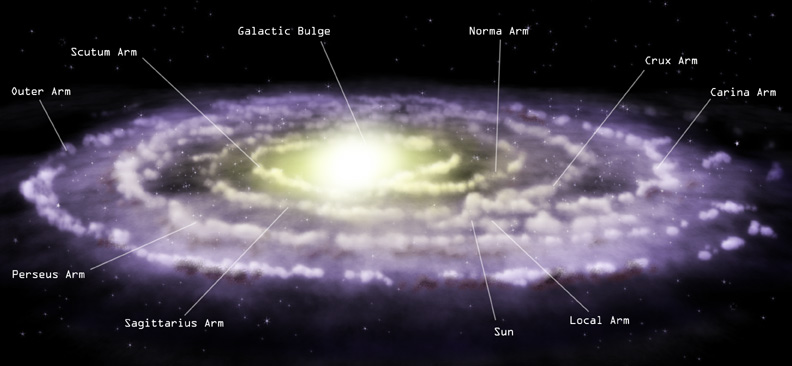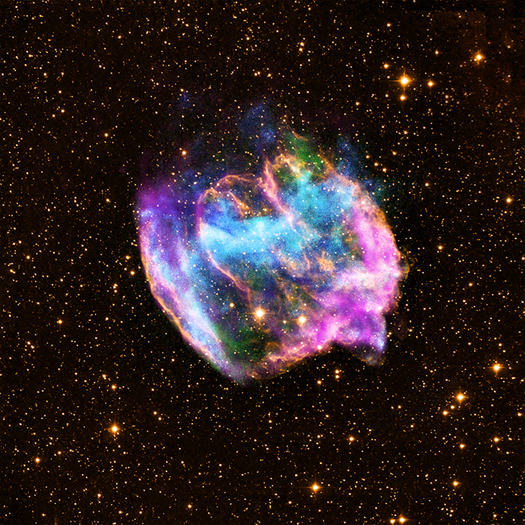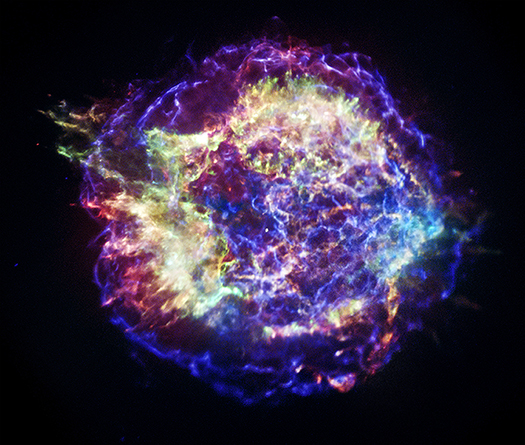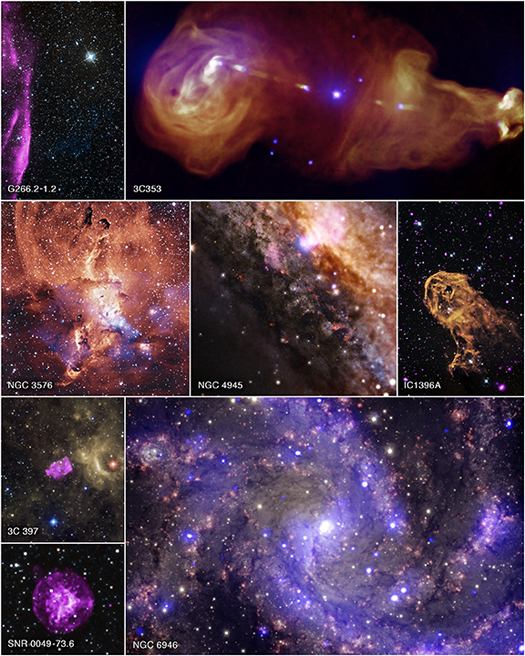Blast From Past Dates Youngest Neutron Star Binary

We'd like to welcome guest blogger Sebastian Heinz, Associate Professor in the Astronomy Department at the University of Wisconsin-Madison. He received his Ph.D. at the University of Colorado at Boulder. He studies relativistic jets -- a phenomenon observed around black holes and neutron stars, and began work on the project described here when he was a Chandra Postdoctoral Fellow at MIT.
Circinus X-1 had been a puzzle to X-ray astronomers almost from the moment of its discovery. It is an X-ray binary -- a neutron star sucking matter away from a companion star it is in orbit with, and it shines brightly when that matter spirals inward and eventually lands on the neutron star's surface. But it had defied classification into the basic categories scientists have been using for X-ray binaries. In some ways it behaves like a very young source, like the fact that the orbit of the two stars seems to change rapidly (and whenever things change rapidly in astronomy, we tend to infer that they cannot be very old). In other ways, it behaves like an old neutron star -- one that has lost most of the intense magnetic field which neutron stars are believed to be born with. It also blasts powerful streams of hot plasma, called jets, into interstellar space. And that's why I became interested. I study jets and I wanted to know why the jets from Circinus X-1 were able to light up and stay lit on scales of a few light years when other microquasar jets flared and then dimmed.
The Search for a Jet from Sgr A*

We are delighted to welcome a guest blog post from Zhiyuan Li, who led the work explained in our latest press release describing the best evidence yet for a jet from the supermassive black hole in our galaxy. Zhiyuan obtained his PhD at UMass/Amherst and did a postdoc at the Smithsonian Astrophysical Observatory. He went on to a Assistant Reseacher position at UCLA, where he worked with Prof. Mark Morris on the Sgr A* jet. He is currently a Professor of Astronomy at Nanjing University in China.
Today most astronomers believe that a supermassive black hole (SMBH), which weighs several million times more than the Sun, lurks at the very center of our Milky Way galaxy. The existence of such an entity was more just a speculation some 40 years back, when the two British astrophysicists, Donald Lynden-Bell and Martin Rees, first proposed the idea. Lynden-Bell and Rees suggested one particular observational test: "Very long baseline interferometry may soon be possible…to determine the size of any central black hole that there may be in our Galaxy" -- and they were right. There soon came the memorable discovery by Bruce Balick and Robert Brown, who in early 1974 used the Green Bank interferometer to find a compact radio source at the expected position. The source is now widely known as Sagittarius A* (Sgr A*) and accepted as the radio counterpart of the putative SMBH. (Most astronomers would use Sgr A* to denote the SMBH, and we do so below.)
New Evidence For A Jet From Milky Way’s Black Hole
New evidence has been uncovered for the presence of a jet of high-energy particles blasting out of the Milky Way's supermassive black hole. As outlined in the press release, astronomers have made the best case yet that such a jet exists by combining X-ray data from NASA's Chandra X-ray Observatory with radio emission from the NSF's Very Large Array (VLA).
Carnival of Space #328
Welcome to this week's Carnival of Space. It's been a busy Universe out there so let's jump right into it.
The Urban Astronomer has an excellent recap of Hubble's observations of a very unusual asteroid. This asteroid not only has a comet-like tail, it has six of them. Oh yeah, and they apparently change.
Over at the Smithsonian's Air & Space blog, they discuss a very provocative issue: if we go back to the Moon, where should we go and, maybe more importantly, where shouldn't we?
In advance of the recent Maven launch to Mars, the good folks over at Universe Today feature an excellent video that summarizes where the Curiosity rover has been and also where it will be heading in the future.
Exploring the Third Dimension of Cassiopeia A
One of the most famous objects in the sky - the Cassiopeia A supernova remnant – will be on display like never before, thanks to NASA's Chandra X-ray Observatory and a new project from the Smithsonian Institution. A new three-dimensional (3D) viewer, being unveiled today, will allow users to interact with many one-of-a-kind objects from the Smithsonian as part of a large-scale effort to digitize many of the Institutions objects and artifacts.
Getting a Sense of Place in our Universe
The biggest science news this week, by far, has been a new study suggesting that Earth-sized planets in habitable zones may be very common. This is exciting news – who wouldn't want to have more cosmic planetary friends out there that maybe one day we'll be able to explore? By the latest accounts, there could be billions of Earth-like planets out there in our Milky Way galaxy.

FITS and Starts
In continued recogintion of American Archives month, we've dusted off some raw data from recent Chandra press releases over the past year for inclusion in our openFITS collection. This brings the total collection up to 20 objects including supernova remnants, active galaxies, star forming regions, black holes, and pulsars and neutron stars. These data are ripe for exploration. The new data sets include the Vela Pulsar Jet, and supernova remnants W49B and G1.9+0.3 (which also happens to be the Milky Way's most recent supernova remnant).

Preserving the Legacy of the X-ray Universe
Every year, October is designated as American Archive Month. While many people may think "archive" means only dusty books and letters, there are, in fact, many other types of important archives. This includes the use of archives for major telescopes and observatories like NASA's Chandra X-ray Observatory.
A Glimpse of the Violent Past of Milky Way's Giant Black Hole
Researchers using NASA's Chandra X-ray Observatory have found evidence that the normally dim region very close to the supermassive black hole at the center of the Milky Way Galaxy flared up with at least two luminous outbursts in the past few hundred years.
This discovery comes from a new study of rapid variations in the X-ray emission from gas clouds surrounding the supermassive black hole, a.k.a. Sagittarius A*, or Sgr A* for short. The scientists show that the most probable interpretation of these variations is that they are caused by light echoes.
Celebrating Ada Lovelace Day
Today is Ada Lovelace Day. Who is Ada Lovelace, you might ask? She lived in the mid-19th century and is considered by many to be the first computer programmer. The goal of Ada Lovelace Day is help celebrate and promote the achievements of women in the subjects of science, technology, engineering, and mathematics (aka, STEM).
Of course, we at Chandra always jump at the opportunity to highlight the role that women play not only in the scientific endeavors of the mission, but also the computer, engineering, and other critical functions of the observatory. You can meet some of these fascinating women through our blog series, Women in the High-Energy Universe (also in a printable pdf handout).
The organizers of the Ada Lovelace Day hope that this event will spur discussion and further awareness about the irreplaceable achievements women are responsible for in STEM fields. Hopefully, more people from all backgrounds are drawn toward STEM topics both during their education and once on their career paths. And we look forward to helping explore the Universe with anyone who wishes to join the journey.




